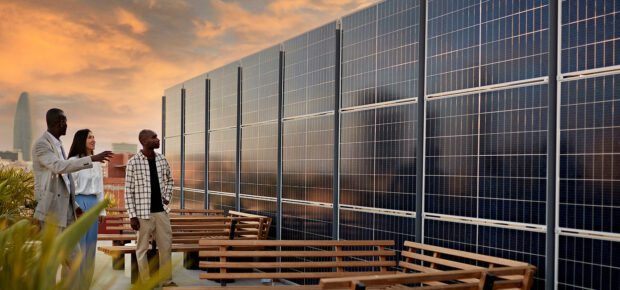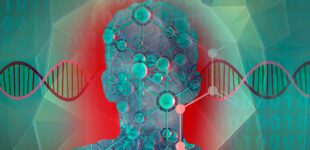November 17, 2021
For businesses, sustainability goals were once seen as a choice. Increasingly, they are an imperative. Consumers, investors and governments are seeking assurances that the demands of the present don’t compromise the future.
Digital technologies are paving the way, in a couple of ways, like cutting power consumption, supporting renewable sources of energy and decentralizing services to mitigate the impact of natural disasters caused by climate change. Along the way, they’re using big data, smart grid, blockchain, renewable energies, Internet of Things and electric cars.
“The technologies as a whole require a high energy expenditure to be developed, however, they replace previous less efficient and dirty methods such as the use of fossil fuels and biomass,” said IEEE Member Filipe Torres.
The IEEE Standards Association supports sustainability through standards that cover, among other things, the interfaces between renewable energy sources and smart grids, the operation of smart grids and methods to measure and identify power consumption of IT and communications devices.
Increasing Energy Efficiency
Global electricity consumption is increasing faster than the worldwide population, according to the U.S. Energy Information Agency. This increase reflects changes in the composition of the global economy toward more energy-intensive industries.
But the rise in consumption has increased the need for energy efficiency, in part to offset higher energy prices and also to reduce consumption of fossil fuels.
“Electricity prices are trending upwards in many areas, so reducing electricity consumption through sustainability efforts can help save significant amounts of money in the long run,” said Kyri Baker, IEEE member.
“Smart devices that monitor and control usage of natural resources such as water, electricity and gas are among the technologies that will drive sustainability in the near future,” said Guilherme Susteras, IEEE Senior member.
Another energy efficiency initiative that is generating significant interest: harnessing waste heat from computers for power generation, either at the data center level or from individual graphics cards.
Supporting Renewable Energy
One challenge of supporting renewable energy is that power generation may not align perfectly with demand. Power consumption tends to drop at night when people are asleep. Wind turbines, however, may still be able to produce power during this time. But unless that energy can be stored in batteries, the wind turbines may simply shut down.
A promising avenue for increasing the number of batteries: storing energy in electric vehicles. The vehicle batteries can be charged during off-peak hours. And during the day, when power demand is high but the vehicles are not in use, they can provide electricity to the grid through bi-directional chargers.
Baker said this type of system could be beneficial for organizations that operate vehicle fleets.
“Looking forward, businesses can also leverage transportation electrification by electrifying fleet vehicles, drawing more people to the business by providing electric vehicle (EV) charging stations and even utilizing bi-directional EV chargers to help shave peak demands and lower electricity bills,” she said.
Decentralized Assets
Rooftop solar panels and localized energy storage can help decrease reliance on a centralized grid. That’s a huge benefit in the case of a natural disaster or widespread power failure.
“Increased deployment of decentralized energy resources — in particular (partly) self-sufficient microgrids with autonomous generation and storage capacity, that are capable of providing service even when faced with grid failures will enable a better response to natural disasters,” said Jorge Soares, IEEE Senior member. “Innovations here range from improved computing capacity, better prediction models, and even vehicle-to-grid capabilities.”
Universities are an ideal venue to explore smart cities technologies. Some are as large as small towns, but their environments can be easily influenced. This IEEE Xplore article explores what researchers are learning about smart cities technology from the experience of university campuses across the world.





 Meaningful Momentum or Running in Place?
Meaningful Momentum or Running in Place? AI Through Our Ages
AI Through Our Ages Liquid Infrastructure: Our Planet's Most Precious Resource
Liquid Infrastructure: Our Planet's Most Precious Resource The Impact of Technology in 2025
The Impact of Technology in 2025 Quantum and AI: Safeguards or Threats to Cybersecurity?
Quantum and AI: Safeguards or Threats to Cybersecurity? Why AI Can't Live Without Us
Why AI Can't Live Without Us Bits, Bytes, Buildings and Bridges: Digital-Driven Infrastructure
Bits, Bytes, Buildings and Bridges: Digital-Driven Infrastructure Impact of Technology in 2024
Impact of Technology in 2024 Emerging AI Cybersecurity Challenges and Solutions
Emerging AI Cybersecurity Challenges and Solutions The Skies are Unlimited
The Skies are Unlimited Smart Cities 2030: How Tech is Reshaping Urbanscapes
Smart Cities 2030: How Tech is Reshaping Urbanscapes Impact of Technology 2023
Impact of Technology 2023 Cybersecurity for Life-Changing Innovations
Cybersecurity for Life-Changing Innovations Smarter Wearables Healthier Life
Smarter Wearables Healthier Life Infrastructure In Motion
Infrastructure In Motion The Impact of Tech in 2022 and Beyond
The Impact of Tech in 2022 and Beyond Cybersecurity, Technology and Protecting Our World
Cybersecurity, Technology and Protecting Our World How Technology Helps us Understand Our Health and Wellness
How Technology Helps us Understand Our Health and Wellness The Resilience of Humanity
The Resilience of Humanity Harnessing and Sustaining our Natural Resources
Harnessing and Sustaining our Natural Resources Creating Healthy Spaces Through Technology
Creating Healthy Spaces Through Technology Exceptional Infrastructure Challenges, Technology and Humanity
Exceptional Infrastructure Challenges, Technology and Humanity The Global Impact of IEEE's 802 Standards
The Global Impact of IEEE's 802 Standards Scenes of our Cyber Lives: The Security Threats and Technology Solutions Protecting Us
Scenes of our Cyber Lives: The Security Threats and Technology Solutions Protecting Us How Millennial Parents are Embracing Health and Wellness Technologies for Their Generation Alpha Kids
How Millennial Parents are Embracing Health and Wellness Technologies for Their Generation Alpha Kids Space Exploration, Technology and Our Lives
Space Exploration, Technology and Our Lives Global Innovation and the Environment
Global Innovation and the Environment How Technology, Privacy and Security are Changing Each Other (And Us)
How Technology, Privacy and Security are Changing Each Other (And Us) Find us in booth 31506, LVCC South Hall 3 and experience the Technology Moon Walk
Find us in booth 31506, LVCC South Hall 3 and experience the Technology Moon Walk Virtual and Mixed Reality
Virtual and Mixed Reality How Robots are Improving our Health
How Robots are Improving our Health IEEE Experts and the Robots They are Teaching
IEEE Experts and the Robots They are Teaching See how millennial parents around the world see AI impacting the lives of their tech-infused offspring
See how millennial parents around the world see AI impacting the lives of their tech-infused offspring Take the journey from farm to table and learn how IoT will help us reach the rising demand for food production
Take the journey from farm to table and learn how IoT will help us reach the rising demand for food production Watch technical experts discuss the latest cyber threats
Watch technical experts discuss the latest cyber threats Explore how researchers, teachers, explorers, healthcare and medical professionals use immersive technologies
Explore how researchers, teachers, explorers, healthcare and medical professionals use immersive technologies Follow the timeline to see how Generation AI will be impacted by technology
Follow the timeline to see how Generation AI will be impacted by technology Learn how your IoT data can be used by experiencing a day in a connected life
Learn how your IoT data can be used by experiencing a day in a connected life Listen to technical experts discuss the biggest security threats today
Listen to technical experts discuss the biggest security threats today See how tech has influenced and evolved with the Games
See how tech has influenced and evolved with the Games Enter our virtual home to explore the IoT (Internet of Things) technologies
Enter our virtual home to explore the IoT (Internet of Things) technologies Explore an interactive map showcasing exciting innovations in robotics
Explore an interactive map showcasing exciting innovations in robotics Interactively explore A.I. in recent Hollywood movies
Interactively explore A.I. in recent Hollywood movies Get immersed in technologies that will improve patients' lives
Get immersed in technologies that will improve patients' lives